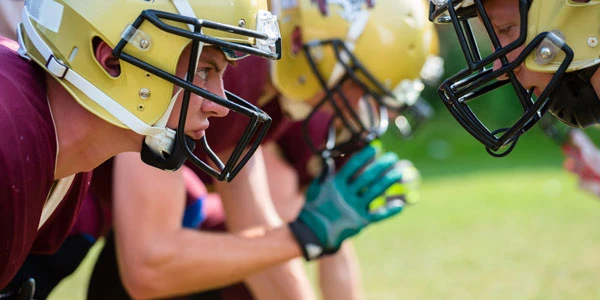The Impact of Visualization on Success in Sports
Visualization and mental imagery are powerful psychological techniques that have become an integral part of athletic training. Athletes across various sports use these methods to enhance their skills, sharpen focus, and build confidence, especially in high-pressure situations. Visualization involves mentally rehearsing a specific skill or performance, often with vivid detail, while mental imagery includes not only visualizing the action but also feeling the emotions, hearing sounds, and even experiencing the physical sensations associated with the task. These techniques allow athletes to create a mental blueprint of successful performance, which they can then draw upon during competition. By mentally practicing movements, plays, or strategies, athletes can reinforce their motor skills, improve reaction times, and even reduce the cognitive load during actual performance, making them more effective and efficient when it counts.
What Visualization Gives in Sports
One of the most significant ways visualization and mental imagery impact athletic performance is by enhancing skill development. Research has shown that mental imagery can activate the same neural pathways in the brain as physical practice. By vividly imagining performing a task, whether it’s executing a perfect tennis serve or scoring a goal in soccer, athletes can stimulate the neural processes responsible for motor learning and muscle memory. This mental rehearsal helps to strengthen the connection between the brain and the body, making the physical execution of the skill feel more natural and intuitive. For example, gymnasts and divers often use mental imagery to perfect their routines and movements before performing them in real life, giving them a sense of preparedness and fluidity. The more athletes mentally rehearse these movements, the more automatic and refined they become when performed physically.
In addition to skill enhancement, mental imagery plays a key role in improving focus and concentration. High-performance sports often require athletes to remain focused for extended periods, despite external distractions such as noise, pressure, or fatigue. By using mental imagery techniques, athletes can train their minds to concentrate on the task at hand and block out any negative distractions. For instance, a runner might visualize crossing the finish line with perfect form, focusing solely on the rhythm of their breathing and stride, effectively tuning out the crowd or any physical discomfort. This mental training enables athletes to maintain a high level of focus during competition, which is critical for performing under pressure. Visualization also helps athletes prepare for specific scenarios, such as a tense moment in a game, enabling them to stay calm, composed, and focused on executing their strategies.
Boosting confidence is another major benefit of using mental imagery in sports. Athletes often face self-doubt or fear of failure, particularly before big events or high-stakes competitions. Visualization helps athletes overcome these mental barriers by allowing them to mentally experience success before it happens. By repeatedly visualizing themselves succeeding—whether it’s making a clutch shot in basketball or hitting a game-winning home run—athletes build a strong belief in their abilities. This process reinforces a positive mindset and helps reduce anxiety, as athletes mentally prepare for potential obstacles and visualize themselves overcoming them. The more an athlete can see themselves succeeding in their mind, the more confident they feel in executing the action during the actual competition.
Mental imagery can also be particularly effective in high-pressure situations where performance anxiety is heightened. When athletes are under pressure, their performance can be affected by nervousness or self-doubt, leading to suboptimal outcomes. Through visualization, athletes can reframe their mindset, focusing on positive outcomes rather than the fear of failure. For example, a football quarterback might mentally rehearse throwing a successful pass in the final moments of a game, imagining the ball spiraling perfectly into the hands of the receiver. This technique helps to reduce the effects of stress and anxiety by allowing athletes to focus on the process and feel more in control of their actions, which in turn enhances their performance.
Impact of Visualization and Mental Imagery on Performance
| Benefit | Description | Impact on Athletic Performance |
|---|---|---|
| Skill Development | Mental rehearsal activates neural pathways related to motor learning and muscle memory. | Enhances physical performance by improving execution and refining skills. |
| Improved Focus | Visualization trains athletes to block out distractions and concentrate on the task. | Helps maintain concentration during competition, boosting performance under pressure. |
| Confidence Boost | Repeated visualizations of success build self-belief and reduce anxiety. | Increases an athlete’s self-assurance and reduces fear of failure. |
| Pressure Management | Visualization helps athletes mentally rehearse overcoming obstacles in high-pressure situations. | Reduces performance anxiety and allows athletes to stay calm and focused in critical moments. |
| Mental Resilience | Regular use of mental imagery strengthens the athlete’s ability to handle adversity. | Enhances mental toughness and enables athletes to bounce back from setbacks. |
Techniques for Effective Visualization in Sports
- Vivid Detail: Include as many sensory details as possible in your mental imagery—visualize the colors, sounds, and feelings associated with the performance.
- Positive Outcomes: Focus on visualizing successful performances to boost confidence and reduce anxiety.
- Pre-Competition Visualization: Use imagery before events to mentally rehearse specific skills or plays, setting a clear mental image of success.
- Post-Performance Reflection: After training or competition, visualize what went well and mentally rehearse improvements for future performances.
- Consistent Practice: Integrate visualization regularly into your training routine to strengthen the connection between mind and body.
In conclusion, visualization and mental imagery are potent psychological tools that offer athletes a distinct advantage in improving their performance. These techniques allow athletes to hone their skills, enhance focus, and build confidence, especially in high-pressure situations. By mentally rehearsing their actions and imagining success, athletes can foster a positive mindset, reduce anxiety, and perform at their peak when it matters most.

